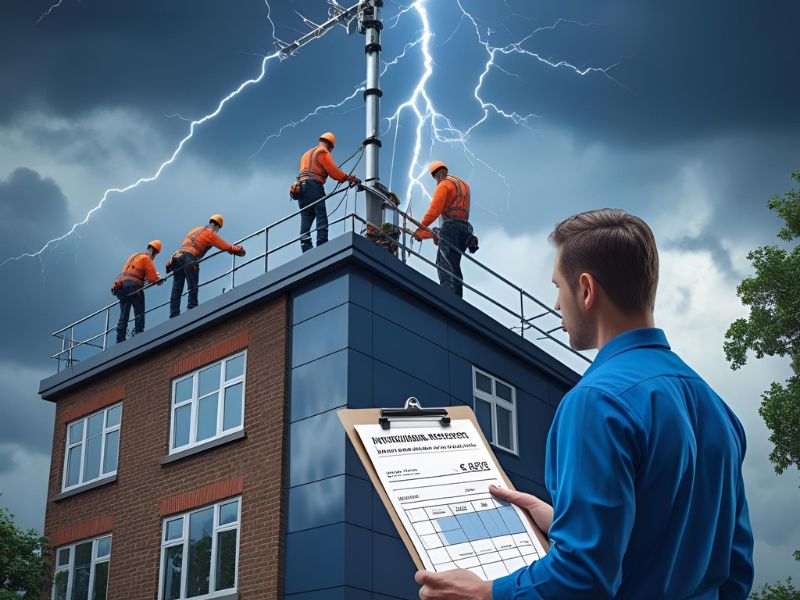
Lightning strikes cause millions of pounds worth of damage across the UK each year, yet many property owners remain unaware of the actual costs involved in protecting their buildings. If you're considering lightning protection installation, understanding the investment required is crucial for making an informed decision about safeguarding your property.
The cost of lightning protection installation in the UK typically ranges from £1,500 for basic domestic systems to over £5,000 for complex commercial or heritage buildings. However, when compared to potential lightning damage costs that can exceed £20,000 per incident, this investment represents significant value for money. We'll break down every aspect of lightning protection system costs to help you understand exactly what you'll pay and why it's worth every penny.
Lightning protection systems work by providing a controlled path for electrical energy to safely reach the ground, preventing damage to your property's structure and electrical systems. These protection systems consist of three main components: air terminals (lightning rods) that intercept lightning strikes, down conductors that channel the electrical current safely downward, and grounding system elements that disperse the energy into the earth.
Modern lightning protection systems must comply with BS EN 62305 standards, which specify four levels of protection depending on your building's risk assessment. The system you need directly impacts installation costs, with more complex buildings requiring additional air terminals, longer down conductors, and more sophisticated grounding systems.
For domestic properties, a typical lightning protection system includes 2-4 air terminals, down conductors running along external walls, and a comprehensive earthing arrangement. Commercial buildings often require lightning protection installation across multiple levels, with additional surge protection devices integrated throughout the electrical systems to protect valuable equipment.
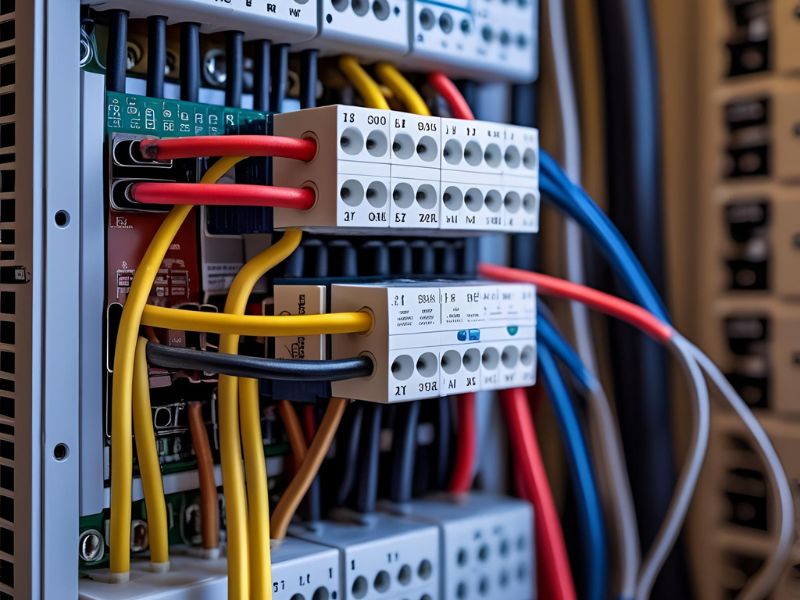
BS EN 62305 forms the backbone of lightning protection requirements in the UK, establishing four distinct protection levels. For those asking what is BS EN 62305, it is the British and European standard that governs the design, installation, and maintenance of lightning protection systems, ensuring safety and compliance across various building types. This standard determines not only the technical specifications but also significantly influences lightning protection cost through its specific requirements for different building types and risk categories.
Level 1 protection offers the highest protection efficiency and requires the most extensive system coverage, naturally resulting in higher lightning protection installation costs. Level 4 provides basic protection suitable for lower-risk applications. The protection level required for your property depends on factors including building height, contents value, and local lightning strike frequency.
Safety regulations mandate that lightning protection systems can only be installed by qualified engineers certified under BS EN 62305. This requirement ensures proper system design and installation but means you cannot use general electricians for this work, affecting the overall cost of lightning protection installation.
Insurance companies increasingly require lightning protection systems for high-value properties, and many insurers offer premium reductions for buildings with properly installed and maintained protection systems. These insurance benefits can offset installation costs over time, making the initial investment more attractive.
For domestic properties, lightning protection system cost typically starts at £1,500 for straightforward installations on standard two-storey homes. However, costs can reach £2,500 or more for larger properties requiring additional down conductors, extra air terminals, or complex grounding arrangements.
Taller domestic properties, including those over three storeys, generally require more extensive systems. Each additional floor typically adds £300-500 to the installation cost due to longer down conductors and additional fixing requirements. Heritage homes often fall into higher cost brackets due to sensitive installation requirements and architectural considerations.
Rural locations may face slightly higher costs due to travel time for installers and potential challenges in accessing certified engineers. However, rural properties also face higher lightning strike risks, making the investment particularly worthwhile for countryside homes.
The final cost for domestic lightning protection installation includes all materials, labour, and certification. Most installers provide comprehensive quotes covering air terminals, down conductors, earthing systems, and all necessary fixings. Professional installation typically takes 1-2 days for standard domestic properties.
**All prices displayed are for a rough guide, fill out our form for an accurate bespoke quote**
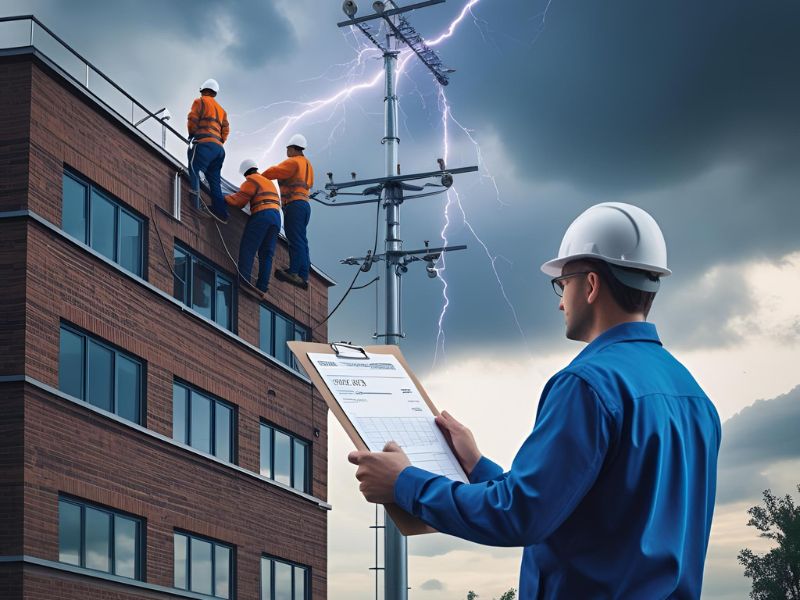
Commercial buildings face significantly higher lightning protection installation costs, typically ranging from £1,500 to over £3,000 depending on building height, complexity, and specific protection requirements. Large commercial structures may require investment exceeding £5,000 for comprehensive protection systems.
The cost of lightning protection for commercial buildings increases with height, floor area, and structural complexity. Multi-storey buildings require additional air terminals positioned according to precise calculations, longer down conductor runs, and more extensive earthing arrangements. Each of these factors contributes to higher material and labour costs.
Industrial facilities often require specialized protection systems designed around specific operational requirements. These installations may include enhanced surge protection devices throughout electrical installations, specialized earthing arrangements for sensitive equipment, and coordination with existing electrical systems.
High rise buildings present particular challenges requiring qualified engineers with specialized experience. Installation costs reflect the technical expertise required and the complexity of working at height with precision installation requirements. These projects typically require multiple engineers working over several days or weeks.
**All prices displayed are for a rough guide, fill out our form for an accurate bespoke quote**
Heritage buildings and listed properties require specialist lightning protection installation approaches that typically cost £3,000 to £5,000 or more. These higher costs reflect the additional planning, specialized materials, and sensitive installation techniques required for historically significant structures.
Historic England strongly recommends lightning protection for heritage buildings, recognizing that lightning strikes can cause irreparable damage to irreplaceable structures and contents. The higher installation costs are justified by the unique protection requirements these buildings demand.
Listed building consent may be required before installation, adding time and potential costs to the project. However, most heritage organizations recognize lightning protection as essential building preservation, and consent is typically granted for appropriately designed systems.
Specialist installers experienced with heritage buildings understand how to integrate protection systems while preserving architectural integrity. This expertise commands premium pricing but ensures your historic property receives appropriate protection without compromising its character or value.
**All prices displayed are for a rough guide, fill out our form for an accurate bespoke quote**
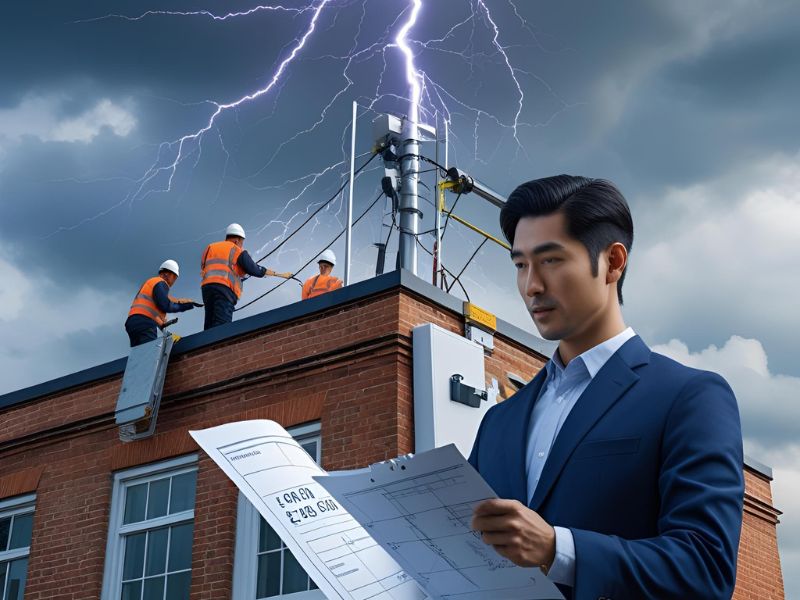
Building height represents the most significant factor influencing lightning protection system installed costs. Taller buildings require more air terminals, longer down conductors, and more complex earthing arrangements. Each additional metre of height typically adds £50-100 to the installation cost.
Roof complexity directly impacts installation costs through additional labour requirements and specialized fixing arrangements. Buildings with multiple roof levels, architectural features, or unusual materials require more time and specialized techniques, increasing the overall lightning protection installation cost.
Site accessibility affects labour costs and installation timeline. Buildings in remote locations, restricted access sites, or areas requiring special equipment may incur additional charges for travel time, specialist access equipment, or extended installation periods.
Electrical systems complexity influences the surge protection devices required and their installation costs. Buildings with sophisticated electrical installations, sensitive electronic equipment, or multiple supply systems need enhanced protection, adding £200-600 per additional surge protection device to the total cost.
Surge protection devices form an essential component of modern lightning protection systems, with costs ranging from £200 to £600 per device depending on type and application. For those asking what is the difference between SPD and lightning protection, it’s important to understand that SPDs are designed to protect electrical and electronic systems from transient overvoltages, while structural lightning protection focuses on safely directing lightning strikes to ground. BS EN 62305-4 standards often require multiple SPDs throughout electrical installations to provide comprehensive protection.
Type 1 surge protection devices, installed at the main electrical supply, typically cost £400-600 each including installation. These devices handle the highest energy levels and provide primary protection for electrical systems. Most installations require at least one Type 1 device at the main distribution board.
Type 2 and Type 3 surge protection devices provide secondary protection for specific circuits and sensitive equipment. These cost £200-400 each depending on specification and application. Buildings with extensive electronic systems may require multiple devices throughout electrical installations.
The integration of surge protection devices with existing electrical systems requires qualified electrical work, adding to installation costs. However, this protection is essential for preventing costly repairs to electrical equipment and electronic systems following lightning strikes or power surges.
Lightning protection installation requires BS EN 62305-certified engineers rather than general electricians, with day rates typically ranging from £300 to £500 per engineer. Complex installations may require multiple engineers working simultaneously, particularly for larger commercial projects or tight installation schedules.
Installation timeline directly affects labour costs, with simple domestic installations typically completed in 1-2 days while complex commercial projects may require a week or more. The technical complexity of ensuring compliance with safety standards and lightning protection requirements means installations cannot be rushed without compromising quality.
Qualified engineers bring specialized knowledge of grounding system design, air terminal positioning, and down conductor routing that ensures effective protection. This expertise justifies the premium labour costs compared to general construction work, as improper installation can leave your property vulnerable to lightning damage.
Post-installation testing and certification add to labour costs but provide essential verification that your lightning protection system meets all regulatory requirements. This testing typically takes half a day and includes continuity testing, resistance measurements, and full system verification.
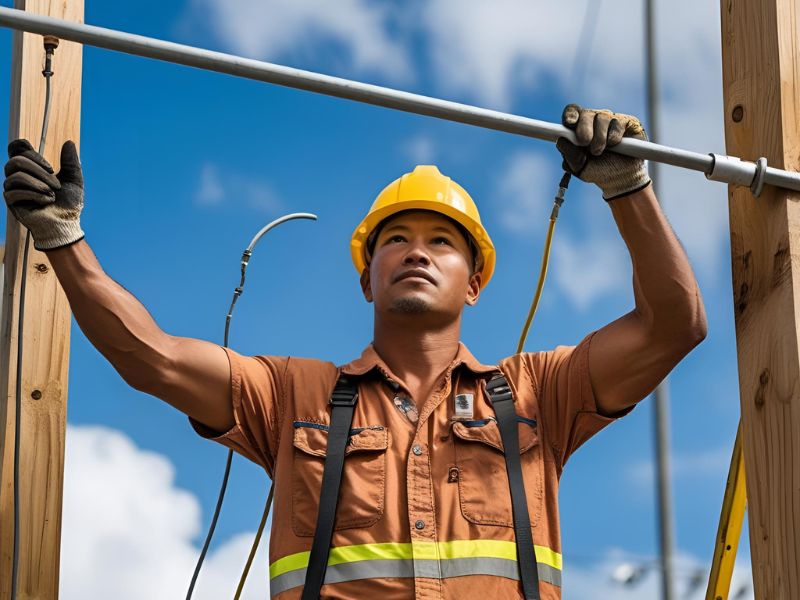
Project complexity determines installation timeline and associated costs, with straightforward domestic installations typically completed within 1-2 days while complex commercial projects may extend over several weeks. Planning and project management represent hidden costs that professional installers build into their pricing.
Weather conditions can affect installation schedules, particularly for roof work and external installations. Installers typically allow for potential weather delays in their pricing, especially during winter months when installation conditions may be challenging.
Coordination with other trades may be required for complex installations, particularly in new construction or major renovation projects. This coordination adds project management time and costs but ensures lightning protection installation integrates properly with other building systems.
Material ordering and delivery scheduling affect project costs, particularly for custom or specialized components required for heritage buildings or unusual applications. Professional installers manage these logistics as part of their service but factor associated costs into their pricing.
Lightning protection costs vary across UK regions, with London and Southeast England typically commanding premium pricing reflecting higher labour costs and travel expenses. Rural areas may face slightly higher costs due to engineer travel time and limited local installer availability.
Local building regulations and planning requirements can influence installation costs, particularly in conservation areas or locations with specific architectural guidelines. Some areas require additional consultation or specialized installation approaches that increase project costs.
Regional weather patterns affect lightning strike frequency and risk assessment, potentially influencing the protection level required and associated costs. Areas with higher lightning activity may require more comprehensive protection systems, increasing installation investment.
Installer availability varies by region, with some areas having limited certified engineers. This supply constraint can affect pricing, particularly during peak installation seasons or following severe weather events that generate increased demand for lightning protection services.
Lightning protection systems require regular testing and maintenance to ensure continued effectiveness, with annual inspections typically costing £200-400 depending on system complexity. For those wondering how much does lightning protection testing cost, This ongoing investment ensures your protection system continues working when you need it most.
BS EN 62305 standards mandate regular testing of lightning protection systems, including continuity testing, earth resistance measurements, and visual inspections. These tests verify that your system remains properly maintained and fully functional, providing peace of mind and regulatory compliance.
Lightning rod maintenance includes cleaning air terminals, checking fixing arrangements, and ensuring down conductors remain secure and undamaged. Most maintenance work is straightforward, but access to high-level installations may require specialist equipment, affecting maintenance costs.
System modifications or repairs following building alterations can add to long-term costs. However, properly installed systems typically require minimal maintenance beyond regular testing, making the ongoing cost burden relatively modest compared to the protection provided.
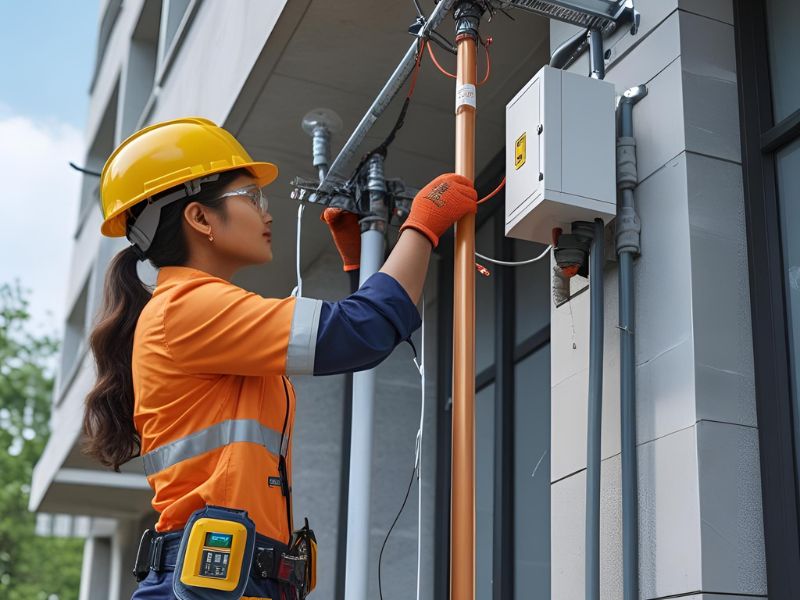
Many UK insurers offer premium reductions for properties with certified lightning protection systems, recognizing the reduced risk of lightning damage claims. These reductions typically range from 5-15% of annual premiums, helping offset installation costs over time.
The Association of British Insurers reports lightning-related claims costing millions each year, with severe weather events making strikes increasingly frequent. Insurance companies actively encourage lightning protection installation through premium incentives and improved policy terms.
Some insurers require lightning protection for high-value properties or buildings in high-risk locations as a condition of coverage. In these cases, installation becomes essential for maintaining insurance protection, making the cost a necessary investment rather than optional enhancement.
Building insurance claims for lightning damage can exceed £20,000 for direct strikes, particularly when fire damage occurs or electrical systems are destroyed. Even partial damage to electrical installations can cost thousands to repair, making lightning protection installation cost appear modest by comparison.
A single direct lightning strike can cause tens of thousands of pounds in damage to unprotected buildings, making the £1,500-£5,000 investment in lightning protection systems financially sensible. When you consider potential repair costs for structural damage, electrical systems, and valuable equipment, protection systems pay for themselves many times over.
Fire damage represents the most severe consequence of lightning strikes, with potential costs reaching six figures for extensive building damage. Lightning protection systems virtually eliminate fire risk by safely channeling electrical energy away from combustible materials and building structures.
Electronic equipment damage from lightning-induced power surges can affect computers, appliances, and business systems worth thousands of pounds. Surge protection devices included in comprehensive lightning protection installation prevent this damage, protecting valuable equipment that would be expensive to replace.
Business interruption costs following lightning damage can exceed direct repair costs, particularly for commercial properties dependent on electrical systems or electronic equipment. Lightning protection installation ensures business continuity by preventing the operational disruption that follows lightning strikes.
Selecting certified installers experienced with BS EN 62305 standards ensures proper system design and installation while providing competitive pricing. Choosing a reputable lightning protection company means working with qualified engineers understand the technical requirements and can optimize system design to minimize costs while maximizing protection effectiveness.
Multiple quotes help ensure competitive pricing while allowing comparison of different design approaches and component specifications. However, the lowest quote may not represent the best value if it compromises on system quality or uses inferior components that affect long-term reliability.
Installer reputation and experience with similar projects provide confidence in pricing accuracy and installation quality. Established companies with proven track records typically provide more accurate cost estimates and deliver installations that meet expectations without unexpected additions.
Warranty coverage and after-sales support add value beyond initial installation costs. Comprehensive warranties protect your investment and provide confidence that any issues will be resolved without additional expense, making slightly higher initial costs worthwhile for superior service.
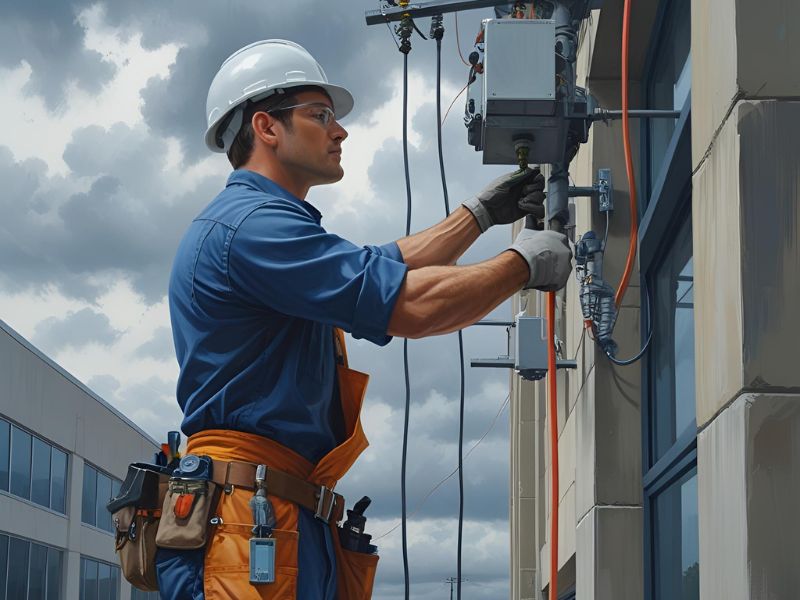
Ready to protect your property with professional lightning protection installation? Lightning Protection Testing UK provides comprehensive quotes for both domestic and commercial properties, helping you understand exactly what lightning protection system cost you can expect for your specific requirements.
Our BS EN 62305-certified engineers assess your property and provide detailed cost breakdowns covering all aspects of lightning protection installation. We ensure compliance with all safety regulations while optimizing system design to provide maximum protection at competitive costs.
Contact Lightning Protection Testing UK today for your free, no-obligation quote. Our expert team will evaluate your property, explain your options, and provide accurate cost estimates for professional lightning protection installation. Don't leave your property vulnerable to lightning damage when effective protection is available at affordable prices.
Protect your investment with professional lightning protection installation from Lightning Protection Testing UK. Your property deserves the best protection, and we deliver it at costs that make financial sense for any budget.